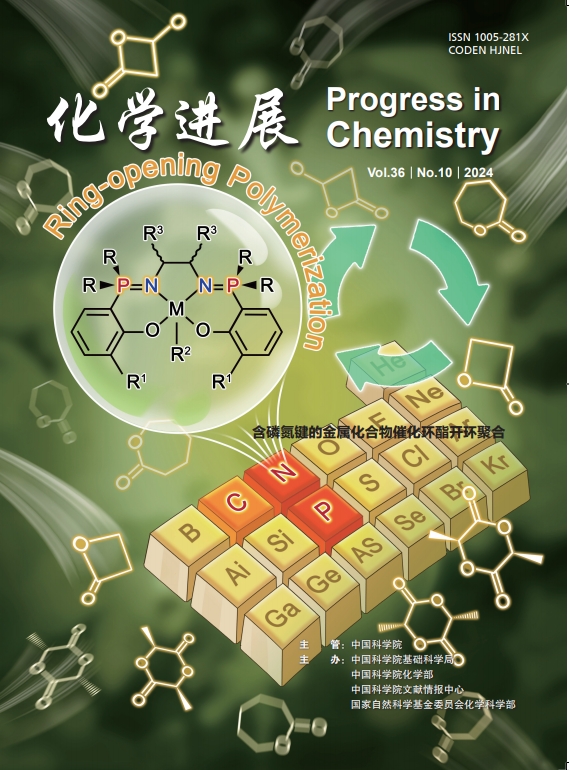PEMBUATAN NANOKOMPOSIT KITOSAN/TiO2/Ag DAN ANALISIS AKTIVITASNYA SEBAGAI ANTIBAKTERI
IF 1
4区 化学
Q4 CHEMISTRY, MULTIDISCIPLINARY
引用次数: 0
Abstract
Penelitian tentang pembuatan nanokomposit kitosan/TiO2/Ag telah dilakukan dengan menggunakan TiO2sebanyak6 gram dan konsentrasi AgNO3 yaitu 5 mM menggunakan metode reduksi dan impregnasi. Nanokomposit yang dihasilkan dikarakterisasi menggunakan X-Ray diffractometry (XRD), Scanning Electron Microscope-Energy Dispersive x-Ray Spectroscopy (SEM-EDS) dan menganalisis aktivitasnya sebagai anti bakteri terhadap Staphylococcus aureus (Gram positif) dan Escherichia coli (gram negatif). Hasil penelitian menunjukkan bahwa ukuran nanokomposit yang dihasilkan sebesar 56,93 nm. Difraktogram XRD muncul puncak karakteristik partikel TiO2 tetapi partikel Ag kurang terlihat jelas. Namun, berdasarkan data EDS, kedua partikel ini ditemukan pada membran kitosan. Ini menunjukkan bahwa sangat sedikit partikel Ag yang terbentuk atau keterbatasan alat XRD dalam mendeteksi sejumlah kecil partikel. Namun demikian, nanokomposit menunjukkan kemampuannya untuk menghambat pertumbuhan kedua bakteri ini.ABSTRACTResearch on the manufacture of chitosan/TiO2/Ag nanocomposites has been carried out using 6 grams of TiO2 and 5 mM AgNO3 using reduction and impregnation methods.The resulting nanocomposites were characterized using X-Ray diffraction (XRD), Scanning Electron Microscope-Energy Dispersive x-Ray Spectroscopy (SEM-EDS) and analyzed their activity as anti-bacteria against Staphylococcus aureus (Gram positive) and Escherichia coli (gram negative).The results showed that the resulting nanocomposite size was 56.93 nm. The XRD diffractogram showed the peak characteristics of TiO2 particles but the Ag particles were less visible.However, based on EDS data, the two particles were found on the chitosan membrane. This indicates that very few Ag particles are formed or the limitations of XRD devices in detecting a small number of Ag particles.However, the nanocomposites demonstrated their ability to inhibit the growth of these two bacteria.纳米复合质/TiO2/Ag的制造和抗菌活性分析
关于kitosan/TiO2/Ag的纳米复合材料制造的研究采用了6克至6克的TiO2和5毫米的不可知论浓度,使用还原和impregnation方法。制造的纳米复合材料采用x射线衍射(XRD)、扫描电子微扫描x射线显微分析(semy - eds),并分析其抗菌作用(阳性克)和大肠杆菌(阴性克)。研究表明,产生的纳米复合材料大小为56.93 nm。XRD衍射似乎是TiO2粒子特征的峰值,但Ag粒子不太明显。然而,根据EDS数据,这两个粒子都是在kitosan细胞膜上发现的。这表明,在检测少量粒子方面,只有极少数的Ag粒子形成或XRD工具的限制。然而,纳米复合材料显示出抑制这两种细菌的能力。利用6克的TiO2/ TiO2/Ag纳米合成技术,已考虑使用减少和改进的方法,使用6克的TiO2和5毫米不可知论3。再生纳米合成是用x射线衍射法、探测能量分析x射线显微分析(semn - eds)和分析它们的作用,即对抗菌菌aurecus(阳性)和Escherichia大肠杆菌(阴性克)。再生纳米合成体积是56.93 nm。XRD diffractogram展示了TiO2 particles的峰值特征,但Ag particles是看不见的。基于EDS数据,在chitosan membrane上发现了两个党派。这一指控涉及几个单位的参与,或涉及XRD的限制,涉及少量的Ag particles。悬浮,纳米合成显示了它们的能力感染了这两种细菌的生长。
本文章由计算机程序翻译,如有差异,请以英文原文为准。
求助全文
约1分钟内获得全文
求助全文
来源期刊

化学进展
化学-化学综合
CiteScore
2.10
自引率
15.40%
发文量
4325
审稿时长
2.5 months
期刊介绍:
Progress in Chemistry is a peer-reviewed monthly journal. It is sponsored by the Chinese Academy of Sciences(CAS) and the National Natural Science Foundation of China(NSFC). It provides a forum to publish review papers of specialized topics covering the full spectrum of chemistry in Chinese or English, with emphasis on those topics of emerging research area. The reviews provide comprehensive information, including recent advances, development trends, as well as critical assessments about the subject. The readers interested are : researchers and students in chemistry and related areas, and policy decision-makers. Most members of the editorial board are famous scientists.
 求助内容:
求助内容: 应助结果提醒方式:
应助结果提醒方式:


